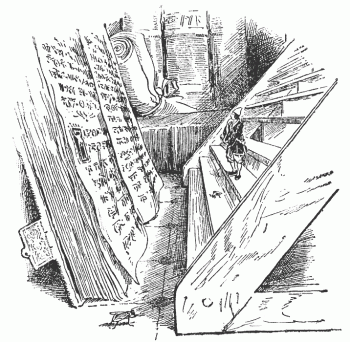A collection of tunes

The Traditional Tune Archive is a World Wide Web information storing and retrieval tool dedicated to instrumental music of the past 300 years traditionally used for dancing in Ireland, Great Britain, and North America. It is a curated semantic index in which the meanings (semantics) of information are organized in a way that makes it possible for the web to “understand” and satisfy the requests of people and machines to use the content. Thus, the aim is to allow the semantics of traditional music pieces—their properties, historical information and musicological traits, commentaries, etc.—to be employed in an improved data structure that allows for myriad research possibilities.
I sincerely hope that users will find the Traditional Tune Archive to be a useful further step in organizing information about traditional music for both general interest and research. It was originally “seeded” with the entire project I had been working on from 1996 to 2010, the Fiddler’s Companion tune index, in which tens of thousands of traditional melodies had been cataloged alphabetically by title into separate entries that also included descriptive information about the tune, including form, key, structure, fiddle tuning, source information, where it could be found in print and on sound recording. Additionally, I entered as much anecdotal information as I could find regarding how the tune was embedded in culture, its provenance, authorship, peculiarities, stories, and mention in the historical record, etc.—a pot pouri of material about the tune, whether factual, speculative, apocryphal, hopeful or simply amusing. Initially, I thought of each separate entry as simply a bin in which to store anything that was said or recorded about the tune, and I made little attempt to sort out fact from rumor, nor truth from speculation, leaving the qualitative work to others. As the project matured, however (along with my own knowledge and experience), it became obvious that the annotated material needed organizing, and I began to employ a much more analytical and qualitative approach, attempting to discriminate between factual information and speculative, however culturally interesting, and to apply some discipline to speculative thoughts. I had no thoughts of abandoning anecdotal material, for it gives considerable information in and of itself of the cultural milieu that is the rich medium for traditional music, but rather to attempt only sorting out what was demonstrably or even reasonably certain from that which could not be verified. One can read, if interested, the original introduction and premise for the Fiddler’s Companion, which outlines my original thoughts about what the project was about and what I was trying to achieve, and judge if I have come anywhere near it.
Sixteen years after the inception of the Fiddler’s Companion I remain intensely interested in the work, and my enthusiasm has only grown over the years. I have been increasingly aware of short-comings, however. First, there’s time. I’m a musician and eagerly seek time to practice and develop my repertoire, and I love opportunities to play with others. The index takes a tremendous amount of time to organize, correct and expand, and although the work is extremely pleasurable, it is increasingly difficult to devote the amount of time needed to develop its potential. Second, the format is severely limited. Early database formats seemed to me to have been ugly, dry and inaccessible, and I preferred an “encyclopedic” look as a “warmer” approach. However, as database formats have become more sophisticated they have transcended my original objections, and it has long been apparent to me that a format change was desirable, if not necessary, to continue the work. Third, the explosion of information available on the internet along with the richness and variety of projects that deal with traditional music of all kinds has immensely increased the amount of information available to the traditional music community. To accomplish my goals I have long determined that a cooperative effort was needed, and that no one person, however motivated, could sustain the effort needed to maintain an indexing project with as broad a focus as the Fiddler’s Companion. Fourth, and perhaps most compelling of all, I realized that what I valued in the course of my own indexing work was the ability to establish relationships and insights, however small, into the broad sweep of traditional music of Ireland, Great Britain and North America. In short, it was the juxtapositions between elements of traditional music that I found interested me the most. The relationships I and others found were rich and varied: sometimes it was tracing the vicissitudes of title or name, sometimes it was a music motif or strain that wormed in and out of different genres, or sometimes tracing a tune back to a likely provenance or source. Occasionally, I was able to savor an “Aha!” moment.
It is my good fortune to be collaborating at this time with Valerio Pelliccioni, who presented the solution to a number of the organizational problems I had encountered with the Fiddler’s Companion. His knowledge of, and expertise with, semantically based web tools holds the promise of allowing an explosion of varied and unique relational juxtapositions that is truly remarkable. In addition, the format we have decided upon allows opening the index not only for casual searches for general information and specific relational searches of any number of combinations, but to contributions from the traditional music “community” to exponentially grow the database for even more useful research combinations.
Andrew Kuntz
8 Veatch Street
Wappingers Falls, NY 12590
